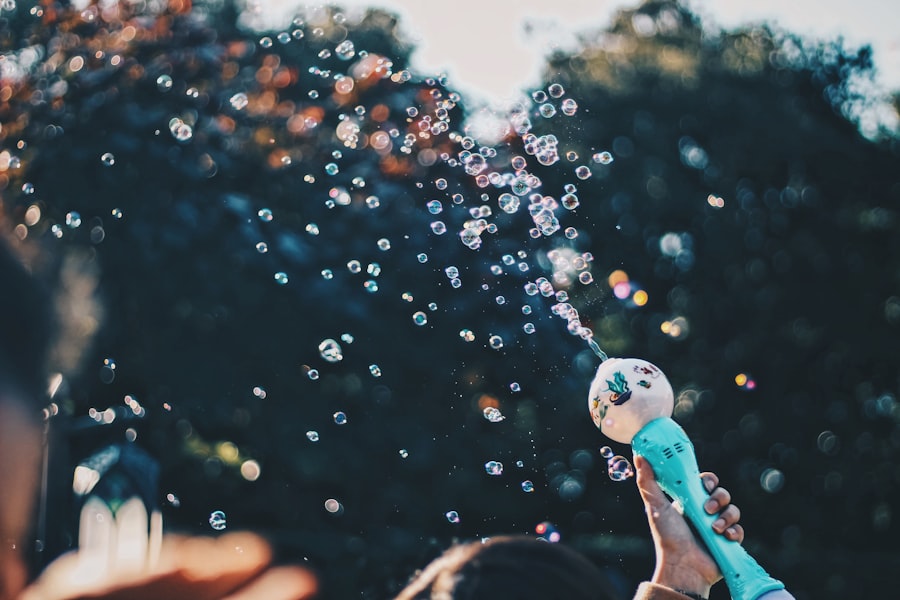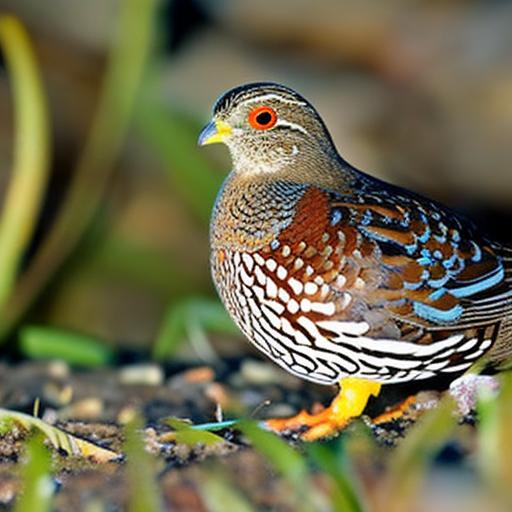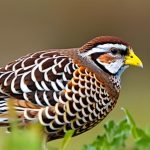When it comes to choosing the right outdoor environment for your pet, there are several factors to consider. First and foremost, you’ll want to ensure that the area is safe and secure. This means checking for any potential hazards such as toxic plants, sharp objects, or small spaces where your pet could get stuck. Additionally, you’ll want to make sure that the area is escape-proof, especially if you have a small or agile pet.
Another important consideration is the size of the outdoor space. It’s essential to provide enough room for your pet to move around and exercise. For example, if you have a rabbit, they will need a large area to hop and explore. On the other hand, if you have a tortoise, they will need a spacious enclosure with plenty of room to roam. Lastly, you’ll want to consider the climate and weather conditions in your area. Make sure that the outdoor environment is suitable for your pet’s species and that they will be able to thrive in the conditions provided.
In conclusion, choosing the right outdoor environment for your pet is crucial for their well-being and happiness. It’s important to consider factors such as safety, size, and climate to ensure that your pet has a suitable and enjoyable outdoor space.
Key Takeaways
- Choose an outdoor environment that is safe, secure, and suitable for your pet’s needs
- Create a secure enclosure to prevent escape and protect your pet from predators
- Provide shelter and shade to protect your pet from extreme weather conditions
- Offer a varied diet to ensure your pet receives all the necessary nutrients
- Monitor your pet’s health and safety regularly and seek veterinary care when needed
- Socialize and provide enrichment activities to keep your pet mentally and physically stimulated
- Consider winter care and make necessary adjustments to ensure your pet’s well-being during cold weather
Creating a Secure Enclosure
Creating a secure enclosure for your pet is essential to their safety and well-being. There are several key elements to consider when designing an outdoor enclosure. First and foremost, you’ll want to make sure that the enclosure is escape-proof. This means using sturdy materials such as wire mesh or fencing to prevent your pet from getting out and potential predators from getting in.
Additionally, you’ll want to provide adequate shelter within the enclosure. This could be in the form of a hutch, nest box, or hiding spots for your pet to retreat to when they need privacy or protection from the elements. It’s also important to consider the flooring of the enclosure. For example, if you have a pet that likes to dig, such as a rabbit or guinea pig, you’ll want to provide a solid base with plenty of bedding for them to burrow in.
In conclusion, creating a secure enclosure for your pet is crucial for their safety and well-being. By considering elements such as escape-proofing, shelter, and flooring, you can ensure that your pet has a safe and comfortable outdoor space to enjoy.
Providing Shelter and Shade
Providing adequate shelter and shade is essential when it comes to creating a comfortable outdoor environment for your pet. Shelter is important for protecting your pet from the elements such as rain, wind, and extreme temperatures. This could be in the form of a hutch, coop, or nest box, depending on the species of your pet. It’s important to make sure that the shelter is well-insulated and weatherproof to provide maximum protection.
In addition to shelter, providing shade is crucial, especially during hot summer months. This could be in the form of trees, shrubs, or artificial structures such as umbrellas or awnings. It’s important to make sure that there are plenty of shady spots for your pet to retreat to when they need relief from the sun.
In conclusion, providing adequate shelter and shade is essential for creating a comfortable outdoor environment for your pet. By ensuring that they have protection from the elements and relief from the sun, you can help keep them safe and comfortable while they enjoy their outdoor space.
Offering a Varied Diet
Offering a varied diet is crucial for ensuring that your pet receives all the nutrients they need to thrive. This is especially important for outdoor pets who may have access to a wider range of natural foods. For example, if you have a tortoise, you’ll want to provide a variety of leafy greens, vegetables, fruits, and even some flowers for them to graze on. On the other hand, if you have a rabbit, you’ll want to offer a mix of hay, fresh vegetables, and small amounts of fruit as treats.
It’s also important to consider any specific dietary requirements for your pet’s species. For example, some animals may require additional supplements such as calcium or vitamin D3 to support their health. Additionally, it’s important to monitor your pet’s weight and adjust their diet accordingly to prevent obesity or malnutrition.
In conclusion, offering a varied diet is essential for ensuring that your outdoor pet receives all the nutrients they need to stay healthy and happy. By providing a diverse range of foods and monitoring their dietary needs, you can help support their overall well-being.
Monitoring Health and Safety
Monitoring your pet’s health and safety is crucial when they spend time outdoors. This includes keeping an eye out for any signs of illness or injury, as well as ensuring that their environment remains safe and secure. Regular health checks are important for catching any potential issues early on and seeking veterinary care if needed.
In addition to health monitoring, it’s important to regularly inspect the outdoor environment for any potential hazards or risks. This could include checking for toxic plants, sharp objects, or any damage to the enclosure that could compromise its security. It’s also important to consider factors such as temperature and weather conditions to ensure that your pet remains comfortable and safe at all times.
In conclusion, monitoring your pet’s health and safety is essential for their well-being when they spend time outdoors. By staying vigilant and proactive in addressing any potential issues, you can help ensure that your pet remains healthy and happy in their outdoor environment.
Socializing and Enrichment

Socializing and enrichment are important aspects of caring for outdoor pets. It’s important to provide opportunities for social interaction with other animals of their species if applicable. This could include introducing them to compatible companions or arranging playdates with other pets in the neighborhood.
In addition to socialization, providing enrichment activities is crucial for keeping your pet mentally stimulated and engaged. This could include providing toys, tunnels, climbing structures, or other forms of environmental enrichment that encourage natural behaviors such as foraging or exploring. It’s also important to rotate enrichment items regularly to keep things interesting for your pet.
In conclusion, socializing and enrichment are important aspects of caring for outdoor pets. By providing opportunities for social interaction and mental stimulation, you can help keep your pet happy and fulfilled in their outdoor environment.
Winter Care and Considerations
Winter care is an important consideration for outdoor pets, especially in colder climates. It’s important to make sure that their shelter is well-insulated and weatherproof to protect them from cold temperatures and harsh weather conditions. This could include adding extra bedding, blankets, or heat lamps to provide additional warmth.
Additionally, it’s important to consider their dietary needs during the winter months. Some animals may require additional calories to maintain their body temperature in colder weather. It’s also important to ensure that their water supply remains unfrozen at all times.
In conclusion, winter care is an important consideration for outdoor pets in colder climates. By taking steps to ensure that their shelter is well-insulated and providing additional warmth and nutrition as needed, you can help keep your pet safe and comfortable during the winter months.
If you’re considering keeping button quail outside, you may also be interested in learning about the best coop options for chickens. Poultry Wizard’s article on “What Kind of Coop is Best for Chickens” provides valuable insights into creating a safe and comfortable living space for your feathered friends. Check it out here.
FAQs
What are button quail?
Button quail, also known as Chinese painted quail, are small ground-dwelling birds native to Southeast Asia. They are popular as pets due to their small size and colorful plumage.
Can button quail be kept outside?
Yes, button quail can be kept outside as long as they are provided with a suitable and secure enclosure. Outdoor enclosures should protect the quail from predators and provide adequate shelter and protection from the elements.
What type of enclosure is suitable for keeping button quail outside?
A suitable outdoor enclosure for button quail should have a solid bottom to prevent them from digging out, as well as a secure roof to protect them from predators. The enclosure should also have areas for shade and protection from the elements, as well as areas for dust bathing and foraging.
What do button quail eat when kept outside?
Button quail are omnivorous and eat a variety of foods including seeds, insects, and small plants. When kept outside, they can forage for insects and plants in their enclosure, but may also require supplemental feeding with a balanced quail feed.
What are the benefits of keeping button quail outside?
Keeping button quail outside can provide them with a more natural environment, allowing them to forage and exhibit natural behaviors. Outdoor enclosures can also provide more space for the quail to move around and explore.
What are the potential challenges of keeping button quail outside?
Some potential challenges of keeping button quail outside include the risk of predation from other animals, exposure to extreme weather conditions, and the need for regular maintenance of the outdoor enclosure to ensure the quail’s safety and well-being.
Meet Walter, the feathered-friend fanatic of Florida! Nestled in the sunshine state, Walter struts through life with his feathered companions, clucking his way to happiness. With a coop that’s fancier than a five-star hotel, he’s the Don Juan of the chicken world. When he’s not teaching his hens to do the cha-cha, you’ll find him in a heated debate with his prized rooster, Sir Clucks-a-Lot. Walter’s poultry passion is no yolk; he’s the sunny-side-up guy you never knew you needed in your flock of friends!







